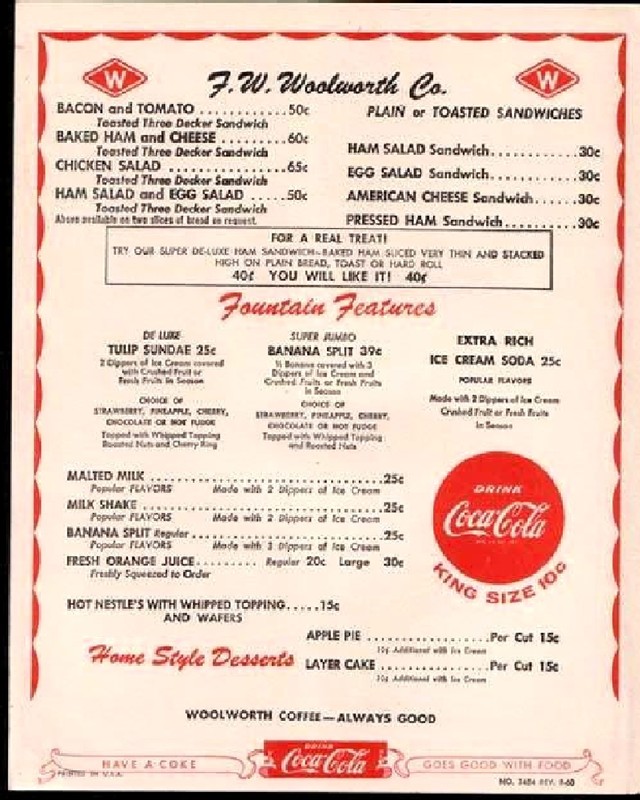4 Corners Revisited: The Evolution of Main and Union Streets, Danville, VA
Introduction
Text-to-speech Audio
Images
Looking to the west up Main Street, the four corners pictured in this 1950s era postcard are: #1, the Dudley Block-- #2, the "hotel" corner--#3, the Masonic Temple corner--#4, the Woolworth corner. Downtown Danville is undergoing revitalization.
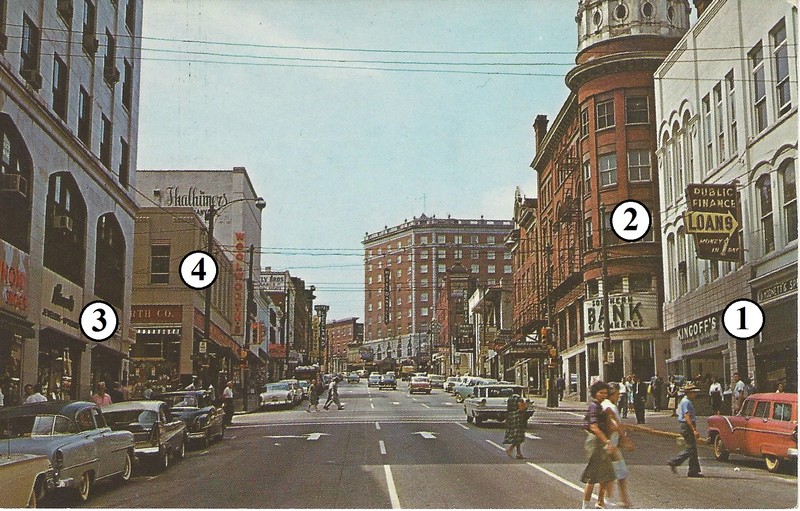
A May 1919 fire nearly gutted the entire three-story Dudley Block (corner #1), which has anchored the corner of Main Street with North Union since 1901. Notice that the tower no longer exists. There is a motorcar, horse & buggy, and trolley tracks.
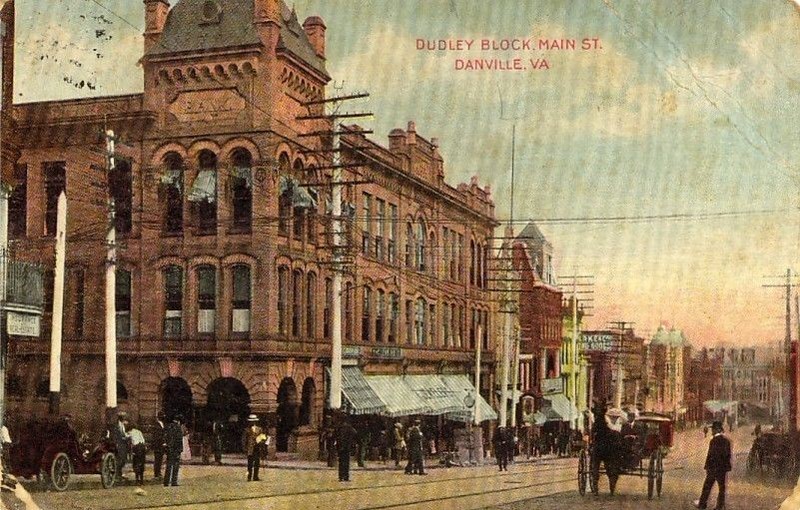
Beginning in 2015, this magnificent building (corner #1) is being renovated for multiple uses. The first tenant is the River District Association. The image is from a 1903 photograph.
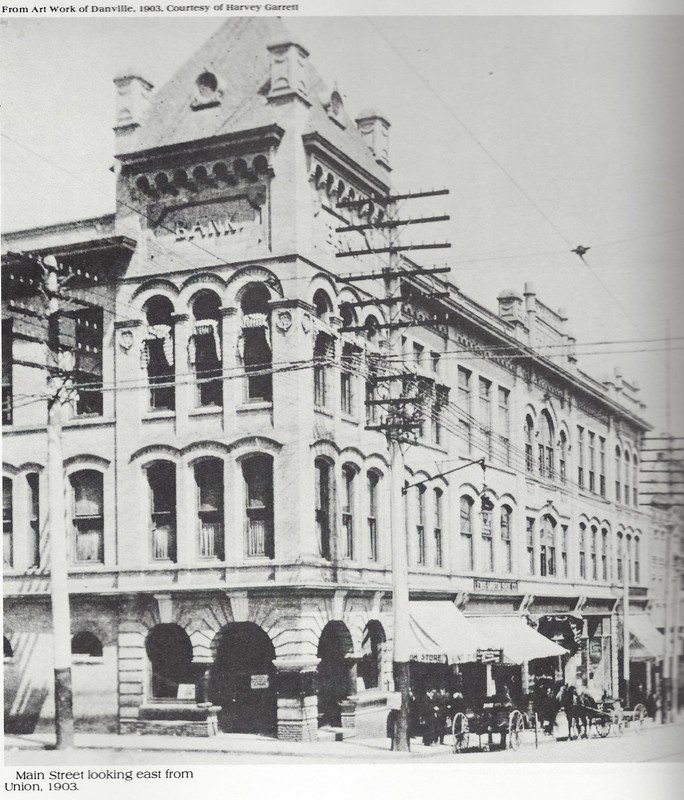
The first (1833) building on corner #2 was the Red Castle Tavern, housing the Farmers' Bank of VA. Shown in an 1870s postal cover, the Arlington Hotel next graced the corner. All the hotels on this corner had to deal with a severe slope of the land.
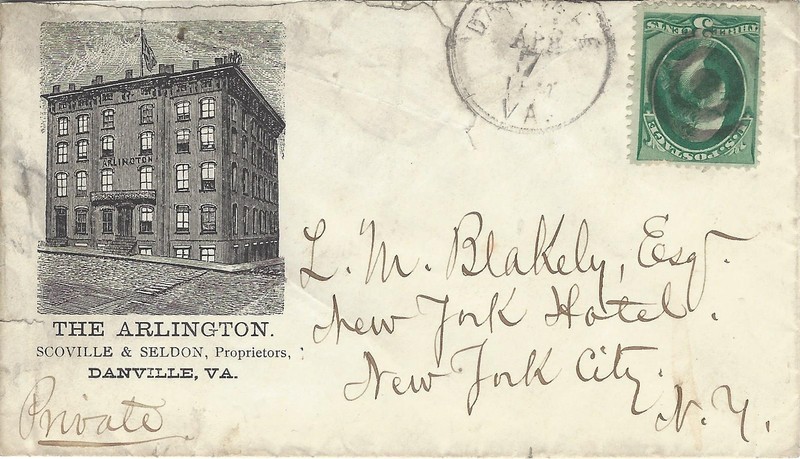
Built in 1891 to replace the Arlington at corner #2, the Hotel Burton was elegant in its day. It even had a specialized "ladies" entrance, where females might enter and go up unseen to the Ladies Parlor on the mezzanine floor.
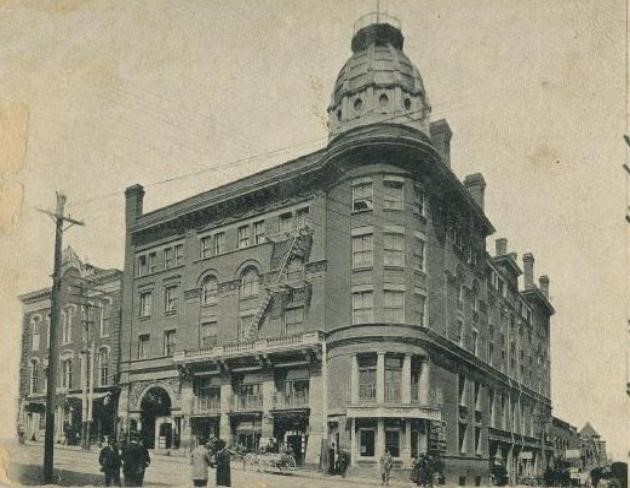
The Burton was replaced in 1962 by the Midtown Motor Hotel (renamed and more commonly known as the Downtowner Motor Inn), the same year that the "Twist" changed the dance world forever and virtually brought an end to popular ballroom dancing.
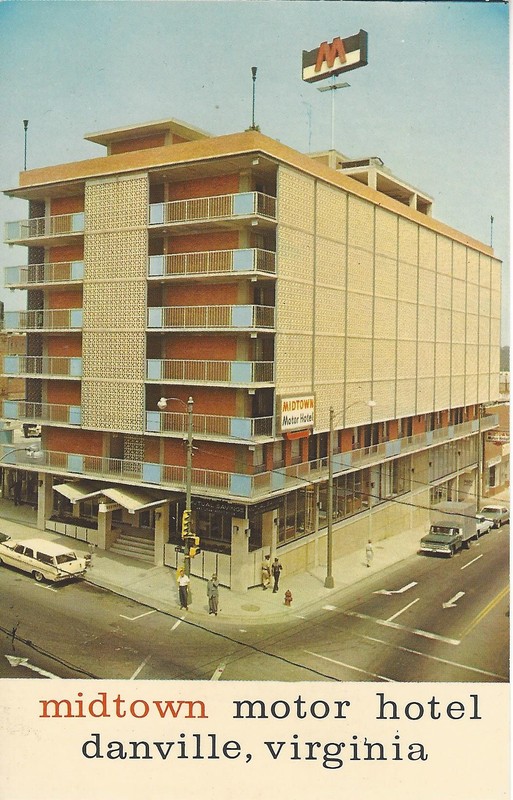
In 2012, the Downtowner was demolished, and the site converted to much needed parking and green space. This may become the site of a parking garage patterned after the Hotel Burton. This is an artist's conception of what it might look like.
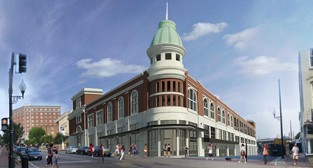
Corner #3 has been home to a Masonic Temple since 1851, shown in this picture. It featured stores and a saloon on the first floor to assure an income.

In 1901, a three-story edifice considered very handsome in its day, replaced the fifty-year old structure, and a resolution was passed that no liquor-selling concern should be allowed to rent any of the business space.
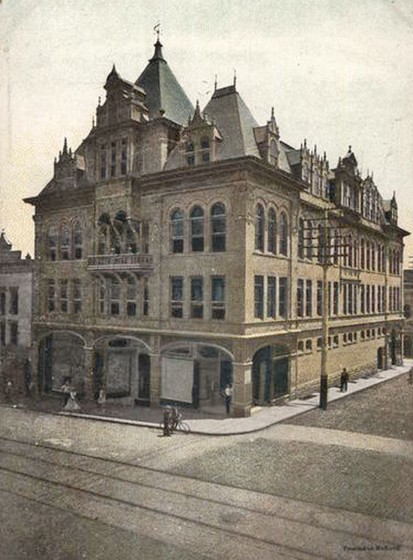
On January 3, 1920, this building along with most of the others on the block, was destroyed by a disastrous fire. This postcard showing the Masonic Temple is dated 1904. Notice the maze of power lines above and trolley tracks below (now buried).
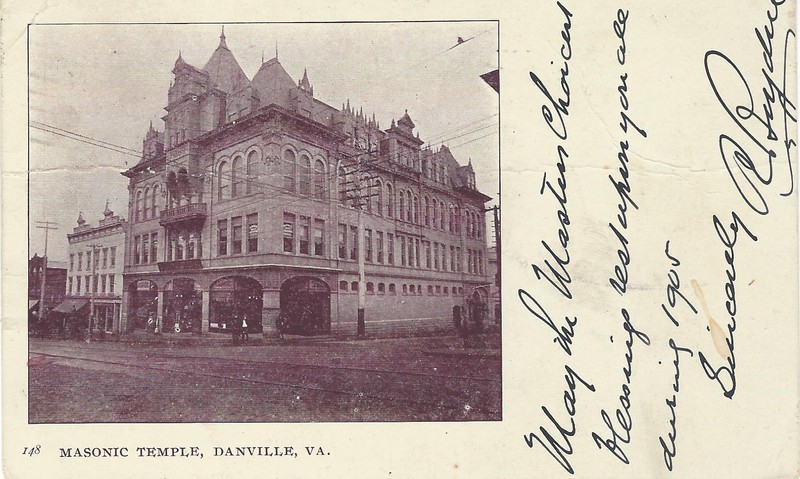
In 1921 the "present" Masonic building was erected on the same site. It is a ten-story structure with stores on the first floor and office and professional suites on all other floors except those reserved for lodge meetings. Danville's best offices.
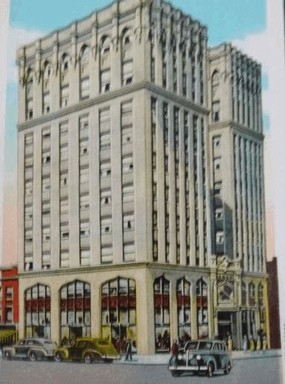
In the early 1930s, Danville architect J. Bryant Heard began to design in a somber monumental version of the Art Deco style. 501 Main Street--Woolworth's on corner #4--was designed by Mr. Heard in 1937 and built by R. E. Clarson.
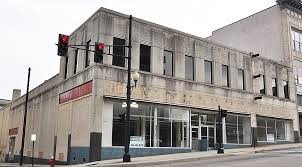
Before the Civil Rights movement, Woolworth's had separate lunch counters for white and Black patrons, and the store was the scene of sit-ins. Woolworth's closed in 1992 and vacated the building. Hopefully, it will be part of Danville's renaissance.
